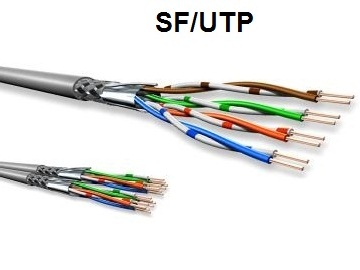The design and the applications of twisted –pair cables
The design
- Twisted-pair cables are consist of many twisted- copper pairs in order to anti-electromagnetic interference emission from the outside,
- If copper pairs are not twisted together, the signal will be in the same phase and amplitude increases leading to interference.
- If copper pairs are twisted, the signal will cross to each other in reverse phase, so the noise is suppressed
- From the emission of UTP Cables and the crosstalk between adjacent cables.
- There are two types of twisted pair cables:
+ Shielded twisted pair cables – STP
+ Unshielded twisted pair cables – UTP
* STP Cables include many twisted pairs which were covered with a braid copper wire. This cover has a function of anti-interference from the outside and anti-interference emission inside. This cover is grounded to escape from the interference.
The speed on the theory is 500Mbps and on the reality is 155Mbps with the length is 100m. They use DIN Connectors (DB-9), RJ45.

The structure of Unshielded Twisted Pair Cables:
* UTP Cables include many twisted pairs as STP cables but they don’t have the shields of anti-interference. The maximum length of the cables is 100m. They are easy to be interferent when being put near the devices such as: High-voltage power lines, Interchannel Interference… They use RJ45 Connectors.
Applications:
Used to transmit signals in a near distance, connect in LAN network, connect among computers, between computers and modules, switches…
Other news
- Tìm hiểu về cấu tạo sợi cáp quang và phân loại cáp
- Extreme Announces First Integrated Solution Following Avaya Acquisition
- Tìm hiểu về bảng đồng tiếp địa chống sét
- Characteristics and the usage of resin cable ties in the telecommunications industry
- Types of Fiber Optic Patch Cord
- Khuyến Nghị Sử Dụng Máy Đo Ethernet – EXFO ETS-1000 / ETS-1000L
- Khuyến Nghị Sử Dụng Máy Đo Phân Tích Phổ - Anritsu MS2711E
- The differences between Optical Fibers and Coaxial Cables
- Electric Cables – Square Power Cables - Kingsignal | T.A.T Telecommunications
- The most three important functions of Rack Server
.png)












